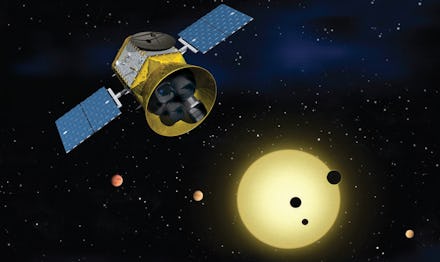Next year, these cameras will hitch a ride to space to hunt thousands of distant planets

Our solar system is special because it’s our home. But step outside on a dark night and you could see as many as 6,000 stars, each of which could be the sun to another neighborhood of planets. Makes you feel pretty small.
Astronomers first spotted an exoplanet — a planet orbiting a star other than our sun — in 1992. Since then, they’ve confirmed thousands more, but the search continues. That’s because a very small portion of exoplanets could be appealingly similar to Earth.
The best way to identify potential exoplanets is to carefully watch individual stars. If a star’s brightness briefly dims in a repetitive way, there’s a decent chance something — like, say, a planet — is blocking part of its light as it orbits.
This is the principle the Kepler mission and its second act, K2, have been based on. And they’ve been very successful, confirming 2,335 exoplanets. But K2 will end in 2017 or 2018, so NASA has been looking for a new planet-spotter.
Enter TESS, or the Transiting Exoplanet Survey Satellite. Due to launch in spring 2018, its mission is to watch 200,000 stars from all parts of our sky, looking for the brightness dips that are exoplanet fingerprints. NASA hopes it will spot about 300 exoplanets between one and two times the size of Earth. And that won’t repeat the work or Kepler — TESS will look at 400 times more sky and study brighter stars than the previous mission was able to.
The vast coverage will come thanks to four wide-field cameras — and those cameras just got the technical all-clear to be installed in the satellite itself.
Once installation is complete, the rest of the year will be spent putting the spacecraft through its paces to make sure all the machinery can stand up to the dangers space will throw at it.
The TESS mission will take two years to study stars across the whole sky. The intriguing candidates it spots will be passed along to the James Webb Space Telescope, also due to launch in 2018, to gather more data.